"imperfections are gifts to be worked with, not shames to be hidden." Andrea Mantovani
Artists who turn ordinary into extraordinary
Jan Vormann, Dispatchwork
image by Jan Vormann
Jan Vormann’s global Dispatchwork project uses LEGO bricks to repair damaged walls. “Together we have infiltrated cultural heritage, facades, and fortifications. From cottage to skyscrapers Dispatchwork has sealed and healed fissures” (dispatchwork)
See
The Japanese concept of Kintsugi helps humans to embrace imperfections.
The 400+ year old Japanese art of kintsugi (golden repair) or kintsukuroi (golden joinery) is a pottery repair method that honors the artifact’s unique history by emphasizing, not hiding, the break. This method transforms the artifact into something new, making it more rare, beautiful, and storied than the original. (medium.com)
Look at the work of the following artists who hope to bring attention and levity to the broken.
Jan Vormann, German Artist, uses LEGO to heal and enliven gray cities
image by Jan Vormann
Vormann describes the project as “a forum to further develop, piece by piece, a global game together”, one that encourages citizens to take back public space and leave their mark in a playful way…” (streetartnews.net)
NeSpoon
Street artist NeSpoon spruces up public spaces by filling cracks and holes with lace-inspired patterns.
Read more: Artist Beautifies Public Spaces with Ornate Lace Patterns
Ememem, Tiled Sidewalks
Lyon native Ememem, aka “the pavement surgeon,” examines the streets of European cities and checks for splintered pavement and sidewalks fractured in pieces. Using tiles and stones, he patches the gouged wounds with vibrant mosaics, which nestle into uniquely shaped outlines in walkways and walls. The street-based interventions brighten the otherwise gray asphalt and cement with radial patterns and color-coded stripes that the artist describes as a “free and spontaneous surgical act, which repairs as much as it beautifies.” (thisiscolossal)
Say
Author Andrea Montovani states: [Kintsugi is] evidence that we’re all fallible, that we heal and grow, that we survive blows to the ego or to our reputations or health and can live to tell the tale.
Do you agree with Montovani? Do you think this work is important for humans? Why or why not?
How does seeing damaged public spaces impact the people who live there?
How might mosaic, Lego, or lace inserted as repair change the experiences of the people?
Do
Watch this video about Jan Vormann. Vormann repairs the world with LEGO
Check out Vormann’s interactive website of Dispatchwork project to find a repair near you!
Stealthily ‘fix’ something in a public space in a fun way.
Somehow when something new gets marred in some way, I have mixed feelings. Of course, it’s a bummer to see something acquire an imperfection but at the same time now it’s done and there’s no concern of it happening at some point in the future. It somehow shows use and ownership. Now I will consider how to beautifully repair…
Please share your reflections with me by replying to this post, or post and tag my Wonder Wander Facebook or Instagram pages!

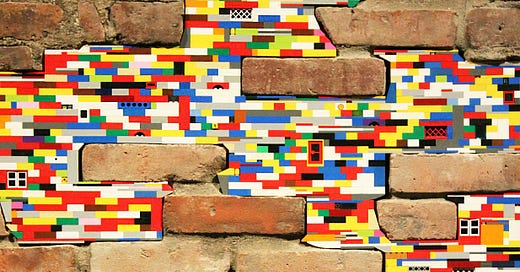



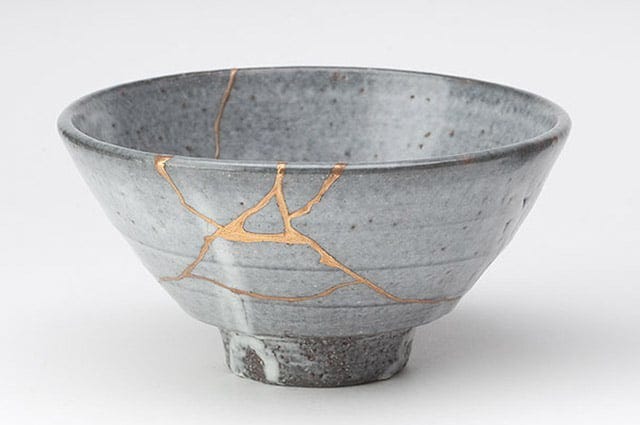

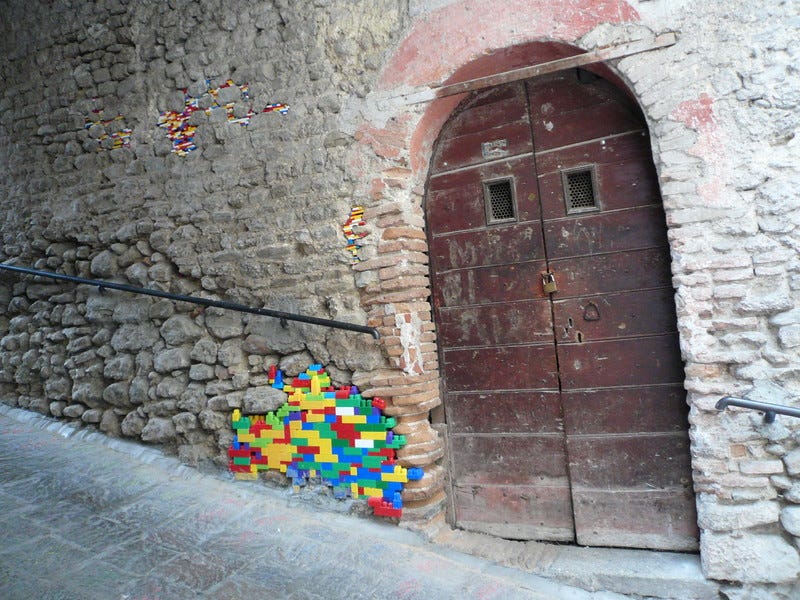
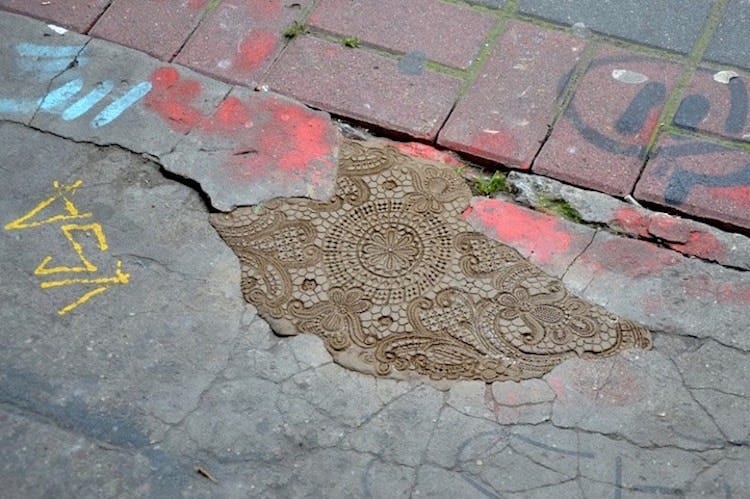
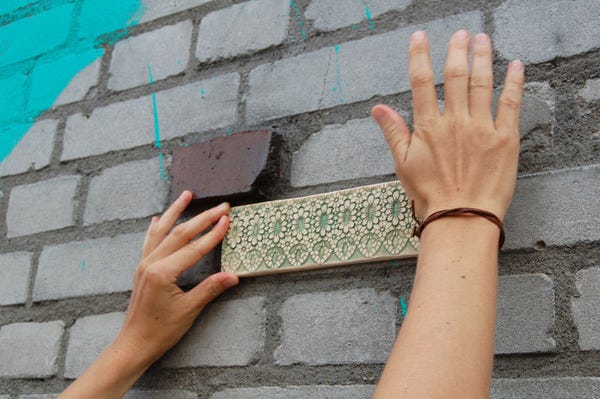
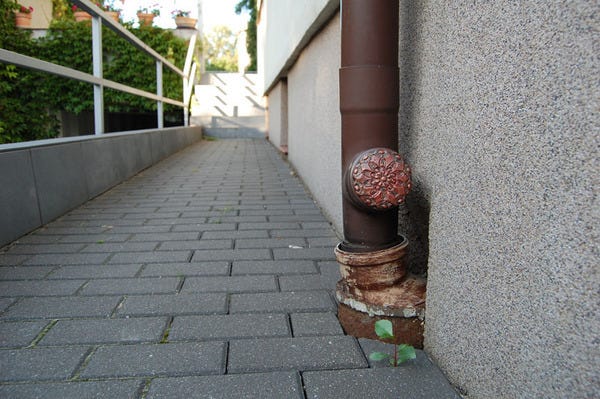
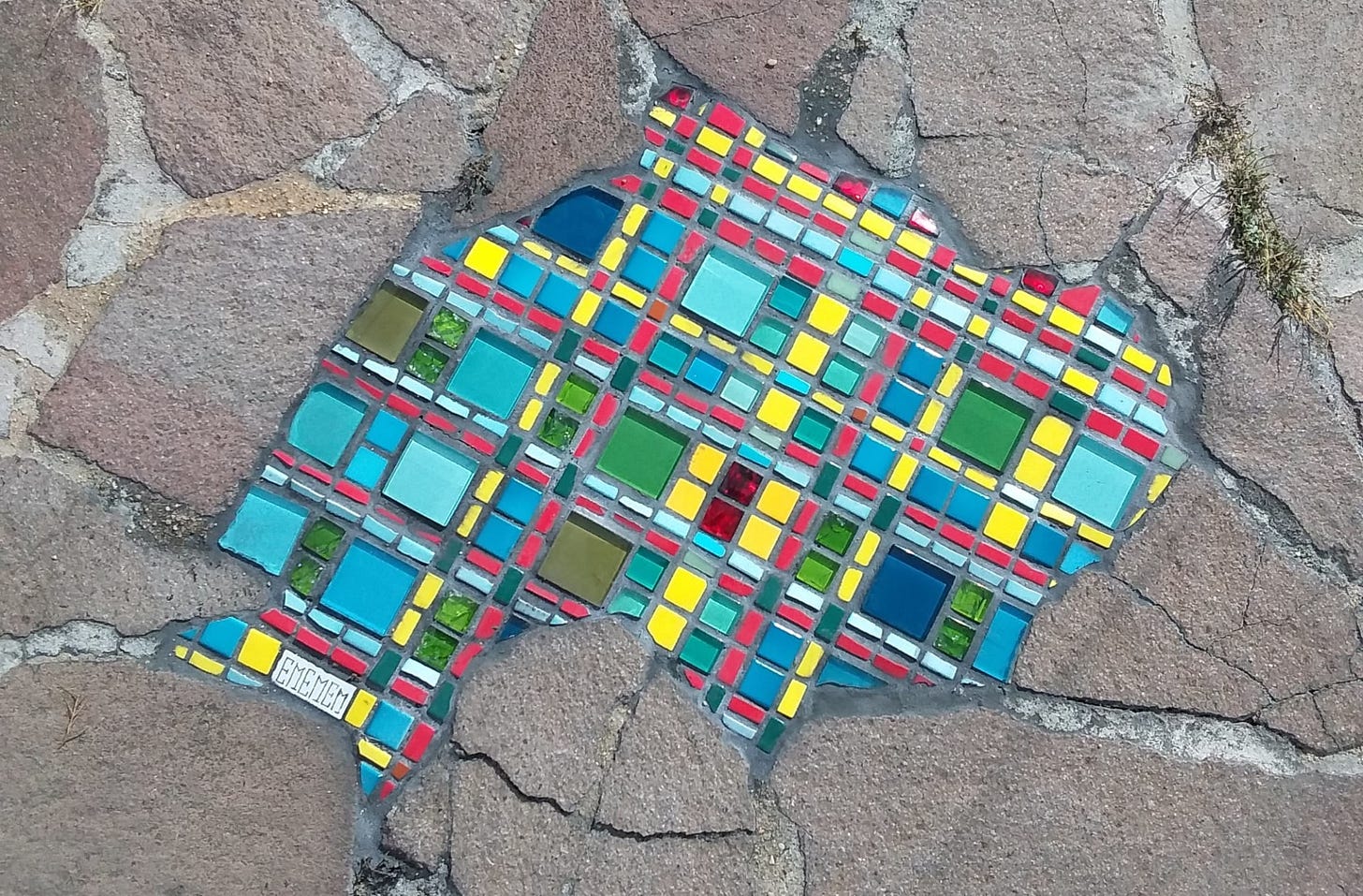
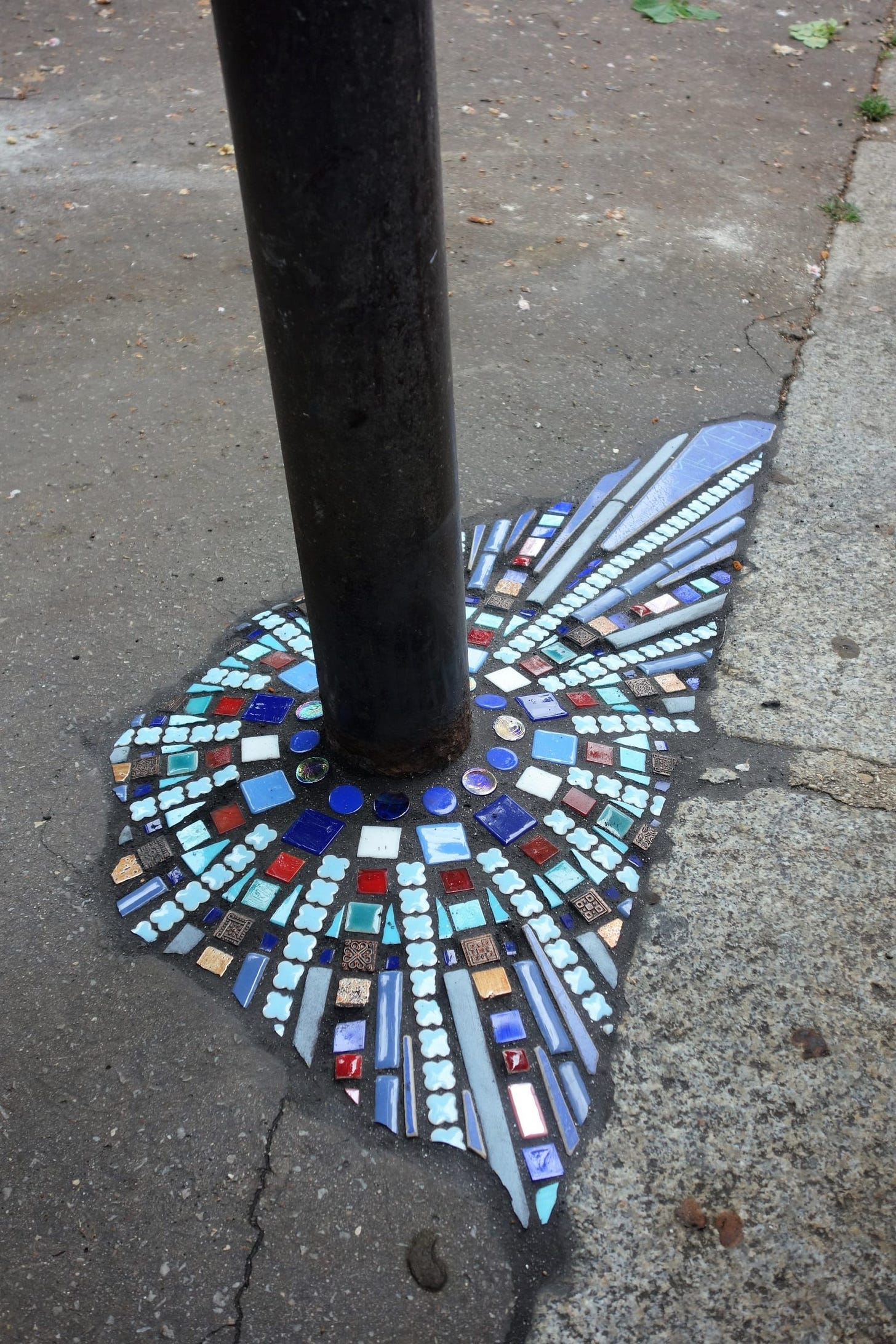
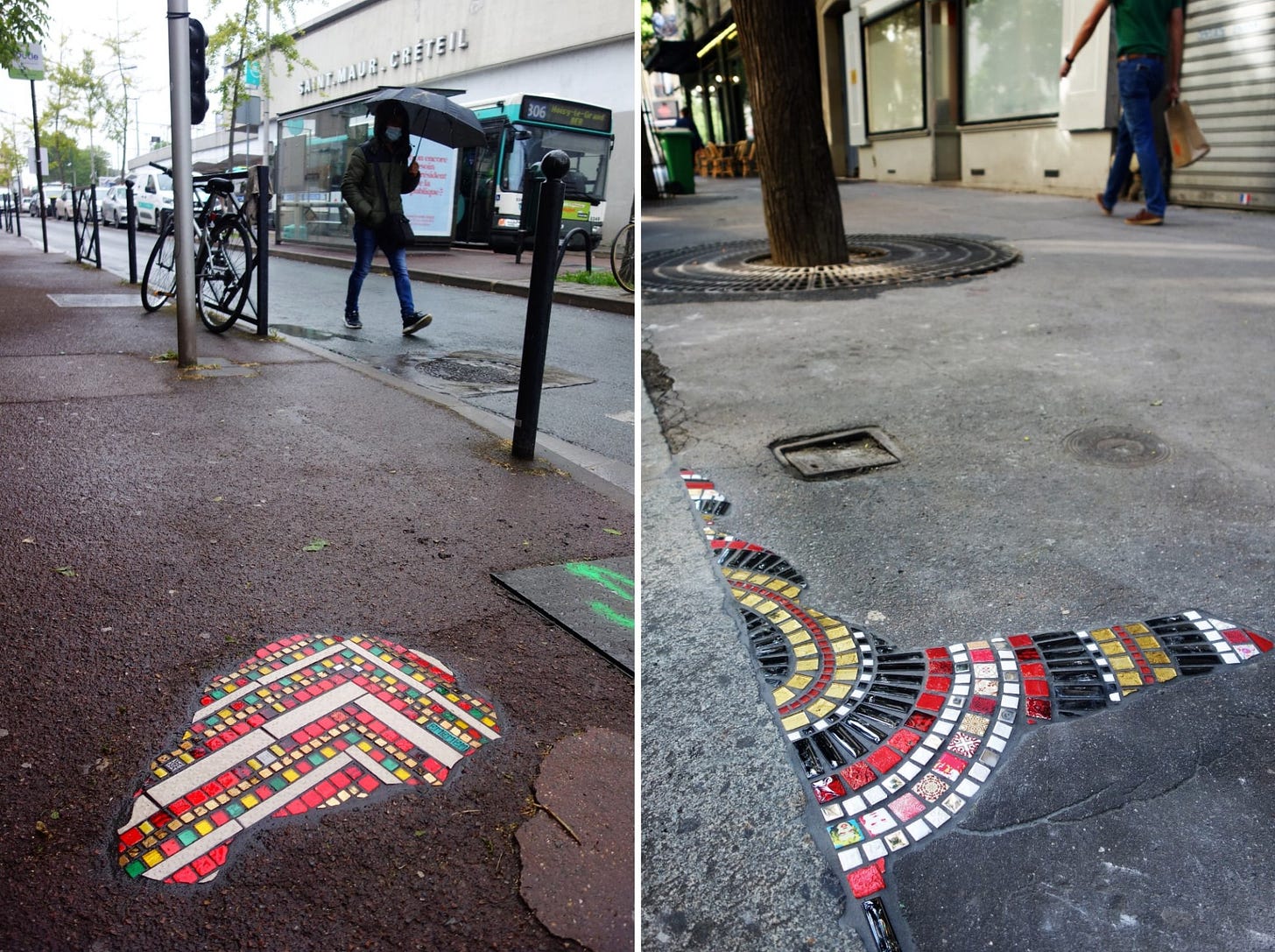
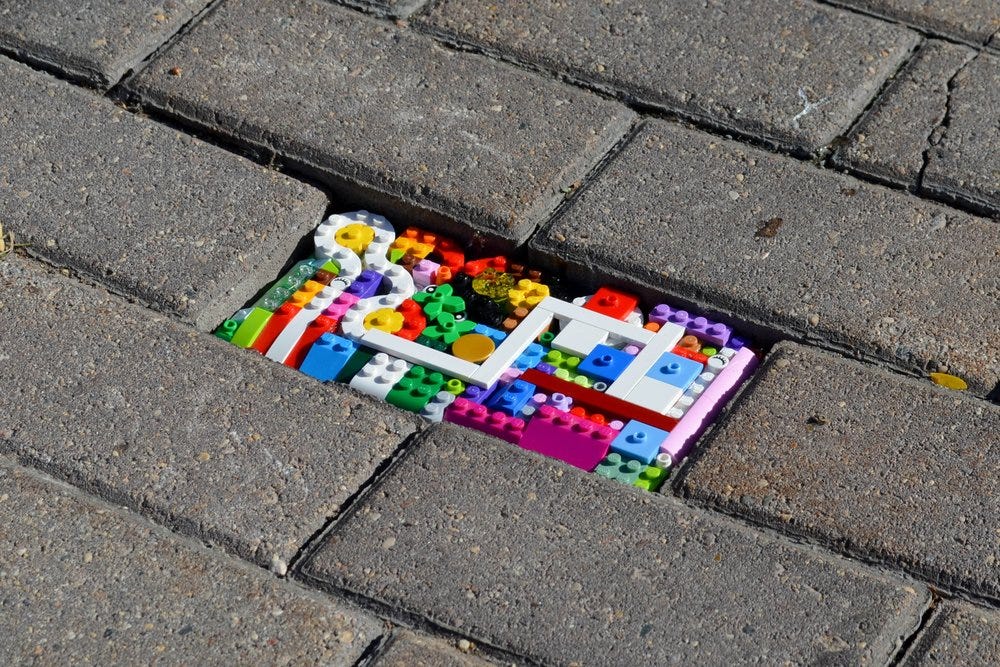


I love the unexpected and colorful materials used to repair damaged surfaces. Makes me smile!
What a great idea to embrace the break and use it to create something even more beautiful rather than trying to hide it. I especially liked the pottery example.